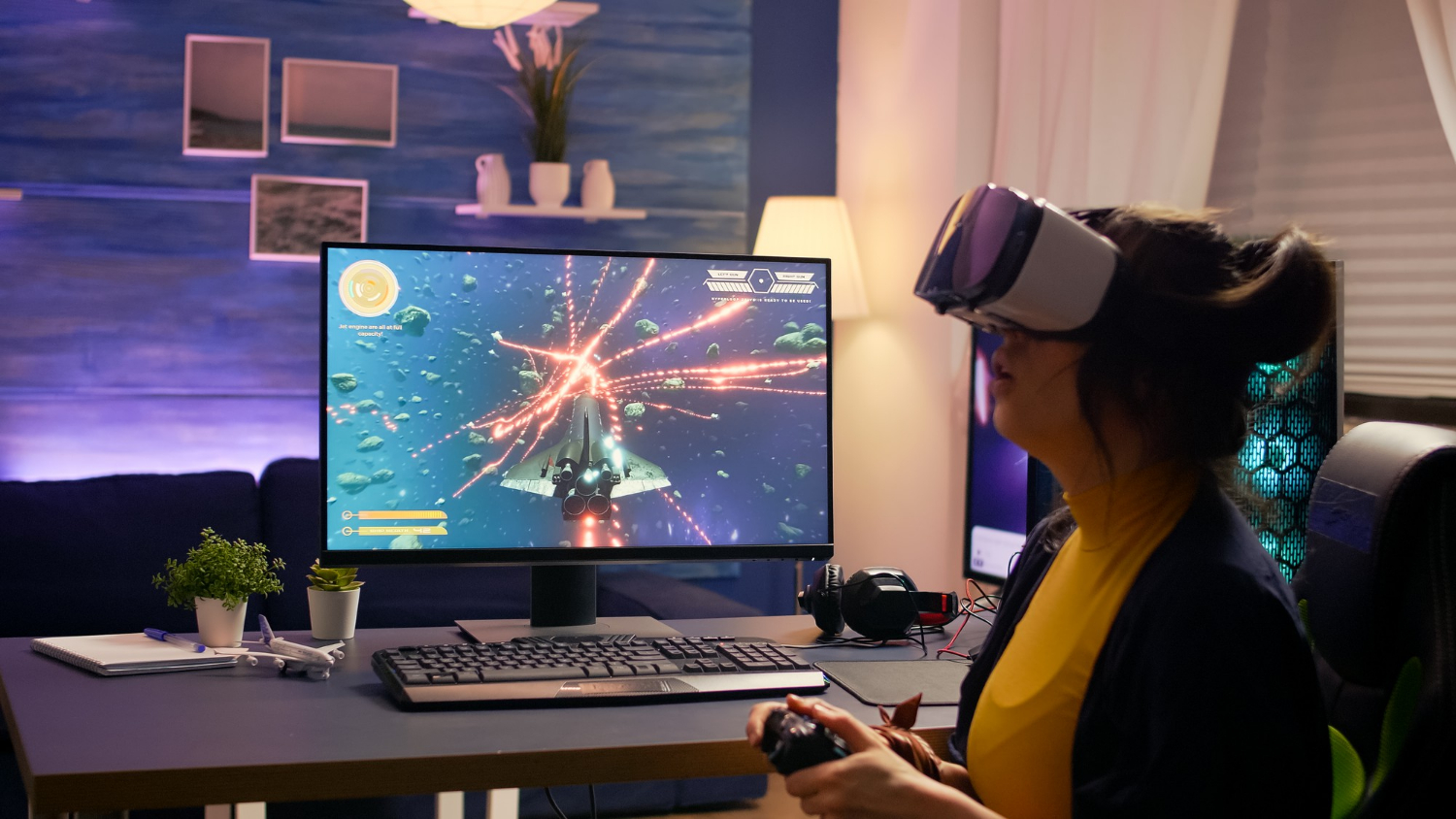Video Game Tech Breakthroughs – Highlighting Innovations in Graphics, AI, Cloud Gaming and VR that are Changing Gaming
The video game industry is constantly evolving with new technological innovations that take gaming experiences to greater heights. In recent years, there have been remarkable tech breakthroughs in areas like graphics, artificial intelligence, cloud gaming and virtual/augmented reality that are dramatically transforming the world of gaming. In this post, we will highlight some of the most significant advancements that are redefining the future of video games.
Revolutionary Photorealistic Graphics
One of the biggest evolutions in gaming technology is the continuously improving photorealistic graphics that make games look more life-like than ever before. The latest generation of gaming consoles such as the PlayStation 5 and Xbox Series X incorporate technological features like ray tracing, 4K/8K resolutions, HDR, and high frame rates up to 120fps that enable unprecedented visual fidelity.
Ray Tracing –
This advanced graphics technique accurately simulates complex light behavior such as reflections, refractions, shadows, global illumination and more. Ray tracing does this by tracing the path of light rays as they interact with objects, which allows for ultra-realistic lighting, reflections and shadows. Nvidia’s RTX series GPUs contain dedicated ray tracing cores to enable real-time ray traced graphics. AMD’s RDNA 2 architecture featured in the new consoles also supports accelerated ray tracing. Ray tracing takes graphics to new levels of realism.
Higher Resolutions –
4K and 8K display resolutions are becoming more common. Higher resolutions result in crisper image quality and detailed textures by increasing the pixel density. Tiny details stand out better without blurring or artifacts. 8K represents the bleeding edge, with a resolution of 7680×4320 that’s 4 times greater than 4K. Console games are now leveraging 4K while 8K is being targeted for even sharper visuals in the future.
HDR –
High dynamic range (HDR) lighting produces a wider range of luminance levels compared to standard dynamic range. This allows for rich contrast between bright and dark areas. HDR enables certain objects and effects like the sun or explosions to appear brighter, while keeping dark regions clean without noise. This increased dynamic range makes lighting, reflections and overall image quality look more natural and realistic.
Higher Frame Rates –
Consoles are now pushing gaming frame rates higher, from the 30fps standard to up to 120fps. Higher stable frame rates translate to smoother, more fluid visuals especially in fast-paced scenes. It enhances the overall motion and responsiveness for a more lifelike gaming experience. PCs allow unlocking frame rates beyond 120fps for super smooth competitive gaming.
Taken together, these major graphics enhancements including ray tracing, high resolution textures, HDR effects and high frame rates result in a level of photorealism never seen before in video games. The visual experience is taken to new heights, showcasing details impossible to distinguish from reality.
Revolutionizing AI and Machine Learning
Artificial intelligence and machine learning have become integral parts of game development, revolutionizing many aspects from graphics to in-game behaviors.
For graphics, Nvidia’s Deep Learning Super Sampling (DLSS) utilizes deep learning to intelligently upscale lower resolution images to higher resolutions while preserving detail. This improves frame rates without compromising visual quality. AI upscaling enables games to run smoothly while rendering at higher fidelities. AMD and Intel have their own versions of DLSS.
AI also assists in tasks like super-resolution texture upscaling. This converts low resolution textures into highly detailed 4K or 8K assets using machine learning algorithms. The upscaled textures appear hand painted while retaining precision. AI super resolution complements manual artist work to achieve exceptional efficiency and visual quality.
For in-game AI, machine learning enables highly complex NPC behaviors. State-of-the-art algorithms like deep reinforcement learning allow game characters to dynamically analyze environments and determine optimal behaviors to take. Characters can learn and adapt independently to player actions. This level of autonomous decision making brings unprecedented realism and unpredictability to NPC interactions.
Nvidia RTX GPUs contain dedicated Tensor AI cores to accelerate neural networks and machine learning. AMD RDNA 2 architecture has real-time ray tracing and AI acceleration engines. Dedicated AI hardware like this empowers developers to efficiently run advanced neural networks that revolutionize graphics, game physics, animations, procedural content generation and overall in-game AI behaviors.
Cloud Gaming – Gaming Without Limits
The emergence of cloud gaming technology has completely changed how games can be accessed across devices by offloading heavy processing to remote servers. This has eliminated the need for expensive gaming hardware.
Cloud gaming services like Nvidia GeForce Now, Google Stadia, Amazon Luna and more allow users to stream and play AAA games on any device including phones, tablets, PCs, smart TVs without high specs. Gameplay is streamed in real-time from remote data centers doing the rendering on powerful GPUs over the internet.
5G networks with ultra-low latency and fast speeds will expand cloud gaming reach. Microsoft and Sony are working on their own cloud platforms to supplement Xbox and PlayStation gaming with flexible access. Features like cross-platform cloud sync allow continuing play between devices anytime.
For developers, cloud gaming lifts hardware restrictions for building more advanced games. With server-side power, resource-heavy features like destructible environments, better physics, elaborate AI behaviors and more can be implemented that weren’t possible before on target gaming devices. This opens endless possibilities for revolutionizing game design principles on the cloud.
Immersive Virtual and Augmented Gaming Environments
Both virtual reality (VR) and augmented reality (AR) gaming are driving incredible innovations, taking immersion to new levels.
Latest VR headsets like the Oculus Quest 2 and HTC Vive Pro 2 offer key improvements – high resolution displays for visual clarity, precise inside-out tracking for accurate motion capture, and 3D spatial audio for lifelike acoustics. All this transports gamers right into virtual worlds with an unparalleled sense of presence. Upcoming hardware promises to take fidelity even further with advances like eye tracking, varifocal displays and more.
In addition to technology, VR game design principles are maturing. Titles like Half-Life: Alyx have shown the engaging potential of gameplay crafted specifically for VR. Interactions feel viscerally real when players can use motion-controlled hands and immerse in a first-person perspective. VR gaming finally allows living inside expansive worlds rather than just observing them.
For AR, experiences are anchored in the physical real-world while overlaying contextual digital content. Pokémon Go popularized location-based AR gameplay using smartphones as a window. However, advanced AR glasses and goggles promise to blend virtual elements like 3D holograms seamlessly onto real surroundings for next-gen hybrid experiences. Epic’s MetaHuman Creator provides tools for high-fidelity digital avatars.
VR and AR have long shown potential for revolutionizing gaming by amplifying immersion. As hardware matures and developers gain experience crafting for these mediums, they move closer to mainstream integration where virtual environments feel unshakably tangible.
The Future of Video Game Technology
This examination covers just a sample of the remarkable technological progress happening in video games – from photoreal CG animations to AIs that learn, from lag-free cloud gaming to immersive VR worlds. These innovations continue opening new dimensions for game creators while taking experiences to unprecedented heights.
As we move into an era of exponential improvement across these domains, the future looks extremely exciting. Companies like Unity and Unreal provide game developers access to cutting-edge next-gen tools for crafting groundbreaking titles. With emerging engines, cloud infrastructure and hardware, the only limit is creativity. Gamers have a torrent of creative possibilities to look forward to as game tech evolves. The next generation of video game tech breakthroughs can’t come soon enough and will undoubtedly shape interactive entertainment in ways we can’t yet envision.




